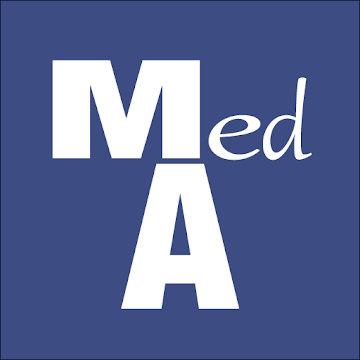“You can’t manage what you can’t measure”
The latest data from the state of North Carolina has been published. We spend considerable time carefully studying the data here at Broad River. It’s like a second report card that we get every quarter. (Obviously the most important report card comes from the customer.)
This data tells us how our customers compare to the rest of the state. It also tells us whether we’ve been successful in helping our customers reach their performance goals. We take it very seriously.
Here are a few of the things we study:
1. – PPD by facility
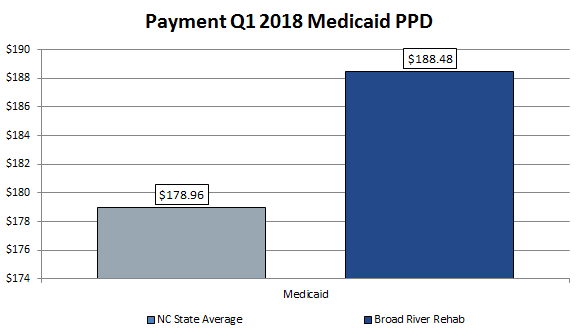
Click to enlarge
Contrary to what a lot of people believe, North Carolina Medicaid reimburses well IF you follow the rules and document the work you do. (More on this later) Accurate documentation means increased reimbursement. The first thing we look at is how our customer PPD compares to the state. We look at this number for each facility as well as overall. As you can see, for this quarter, Broad River customers averaged $188.48 dollars per patient day versus the state average of $178.96. That’s $9.52 more each day on average.
2. CMI versus PPD by Facility
PPD can be deceptive on some occasions so it’s important to look at the case mix index for each facility and compare it to the PPD. We expect our customers to be among the highest performers in the state. Any outliers get special attention. We want to understand the reasons behind the data. Many times we get good insights on ways to improve
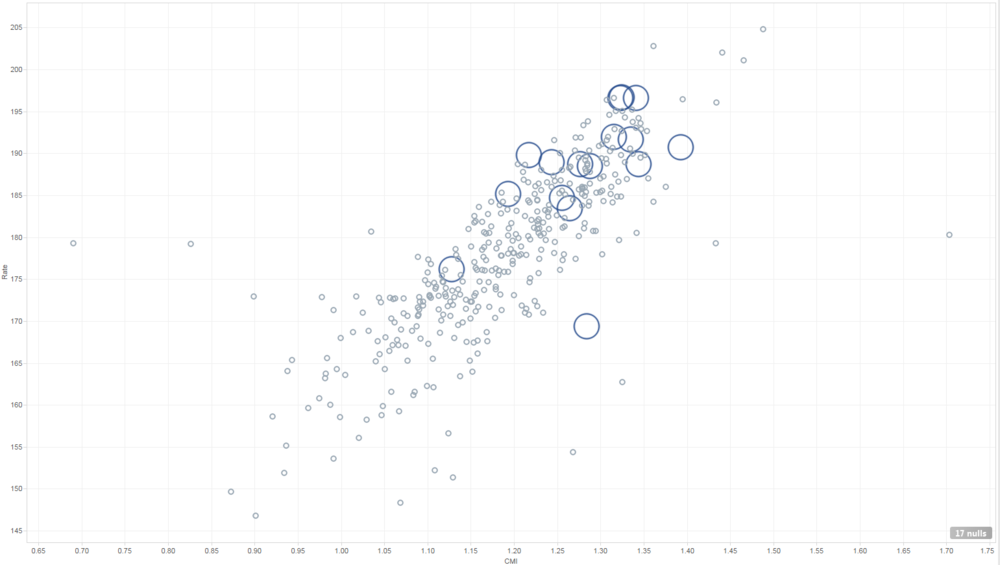
You can see in this image we have facility with relatively high case-mix but lower than average PPD. This is a good opportunity to deep dive into the data and figure out why. There is also a building with lower than average CMI. That’s a new customer so we’ll be following up next quarter on that one.
3. ADL Scoring by Facility
We’ve never seen a facility that captures EVERY bit of the care they deliver to the resident. The higher the percentage of care you document, the higher your case mix. ADL scores are a great indicator of how well you are documenting. Broad River is always looking for innovative ways to help our customers do a better job capturing the critical work that staff in the building do. We do onsite training. We offer remote training. We have our employees document nursing ADLs when appropriate. We don’t just talk about helping you with ADLs, we actually try hard to fulfill that promise.
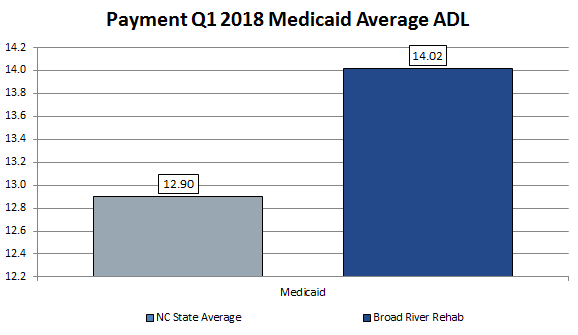
click to enlarge
Broad River customers average more than a point higher than the rest of the state. This can be significant in terms of reimbursement.
4. Percent of Medicaid residents in rehab
This one sounds obvious but we’re always surprised how many companies don’t pay attention to it. A low percentage of Medicaid residents in rehab can indicate a staffing problem or other performance issue.
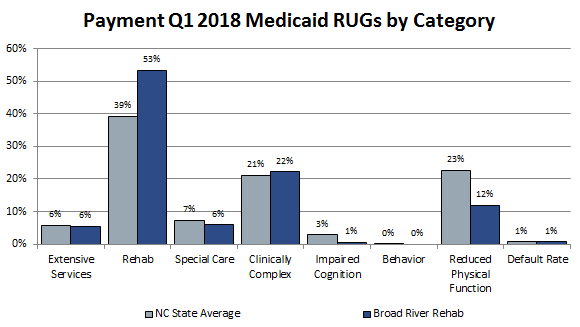
click to enlarge
Broad River averages a higher percentage of Medicaid patients on rehab and a lower percentage of residents in reduced physical function.
These are just a few of the things we look at each quarter with regards to Medicaid. We strongly believe that to be successful, our customers have to be successful. That means working together as a team to make sure our residents get the highest quality care possible. It also means understanding how reimbursement works. It’s not just about therapy.

